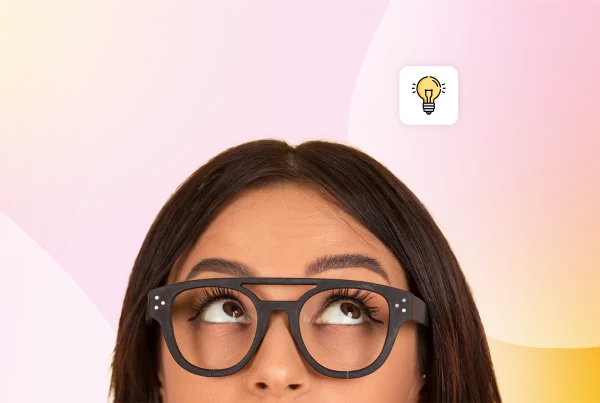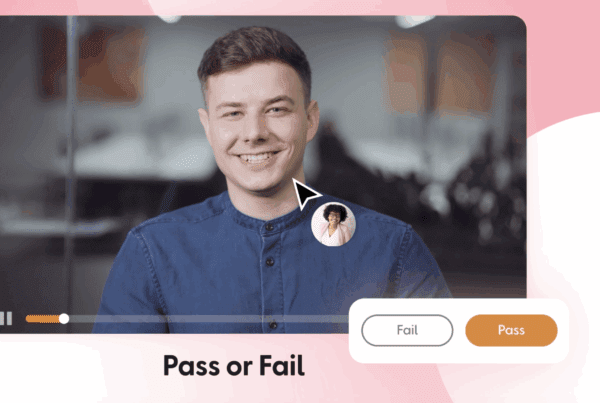You know that moment when someone completes a training session you’ve poured your heart and soul into… and then forgets it all by next week?
Yeah. We’ve all been there. 😬
The thing is, delivering great learning content is only half the battle.
If people don’t retain what they learn, what’s the point of all those beautifully designed modules and workshops?
Wasted energy.
So, how do you make learning stick for your learners?
Glad you asked.
In this guide, we’re sharing 10 proven ways to improve learning retention in the workplace, backed by science and real-world application. From spaced repetition to personalised learning paths, you’ll discover practical strategies your learners (and their brains) will thank you for.
First things first: What is learning retention?
Learning retention refers to the extent to which someone remembers information after a learning experience.
If someone spends an hour learning a new skill today, how much of that knowledge are they still able to recall, apply, or explain tomorrow, next week, or next quarter?
That’s what we’re trying to boost here.
The Science Bit 🧠 (Stay With Us)
Here’s the harsh truth: learners forget most of what they’ve learned fast.
Hermann Ebbinghaus’ “Forgetting Curve” shows that people forget up to 70% of new information within 24 hours if it’s not reinforced.
Ouch.
But the good news? There are proven ways to fight that curve, and we’re about to run through 10 of them.
(P.S. If you’re interested in learning more about the forgetting curve, why not take a look at our previous guide, 10 ways to overcome the forgetting curve.)
10 Proven Ways to Improve Learning Retention in the Workplace
1. Use Space Repetition To Improve Learning Retention
Instead of throwing all the info at learners in one go (then hoping for the best), spaced repetition involves revisiting that info at intervals.
Think of it like this: Remind → Rest → Remind again.
This spaced-out rhythm helps cement knowledge in long-term memory.
Bonus: It also reduces cognitive overload. Win-win.
👉 Pro tip: Use a Learning Platform (like Thirst 😉) to automate reminders and nudges.
2. Apply Microlearning for Better Workplace Learning Retention
Short. Sweet. Specific.
That’s microlearning in a nutshell.
We’re talking bite-sized content that fits into the flow of work.
Think: 5-minute videos, quick quizzes, or 2-slide explainers.
Perfect for brains already juggling 147 things at once.
Not only does microlearning reduce overwhelm, it increases focus, which means higher retention.
See how easy this section was to read and digest?
Related read: What is bite-sized learning?
3. Boost Knowledge Retention with Active Recall Techniques
This is the “test yourself before the test” technique.
Instead of re-reading material (which feels productive but isn’t), active recall forces learners to retrieve knowledge without prompts. Flashcards, quizzes, or even brain dumps all do the trick.
It’s a little effort-heavy up front, but so worth it.
Because recall strengthens memory pathways = better retention.
4. Improve Learning Retention with Scenario-Based Learning
Being totally honest, no one is ever going to remember abstract concepts they can’t apply.
Scenario-based learning throws learners into realistic situations where they have to use what they’ve learned. It mimics the real world, creates emotional engagement, and helps knowledge stick.
Think: “What would you do in this situation?” instead of “Here’s a policy doc. Read it.”
5. Increase Learning Retention Through Immediate Application
Speaking of the real world…
The sooner someone applies what they’ve learned, the more likely they are to retain it.
That means giving learners opportunities to use new skills, right after training, whether that’s on a live project, through roleplay, or shadowing a peer.
Don’t let new knowledge sit on a shelf. Get it into action.
6. Use Peer Teaching To Enhance Workplace Learning Retention
Want to test how well someone understands something?
Ask them to teach it.
Seriously. Peer teaching (aka peer-to-peer learning) boosts retention by forcing learners to organise and articulate knowledge in their own words.
Plus, it encourages collaboration. And we love a bit of shared learning around here.
Need ideas? Check out: 7 ways to create a lifelong learning culture.
7. Drive Engagement and Retention Through Gamification
Points. Progress bars. Friendly competition.
Gamification taps into our natural drive to compete, complete, and win. And when learning feels like a game? People want to keep playing.
It boosts engagement and retention by making the experience more rewarding (literally and emotionally).
No, it’s not just about badges. But let’s be honest…people love a good leaderboard.
Why not take a look at why We Built Assessments in Thirst
8. Improve Retention with Visual Aids in Workplace Learning
Here’s a stat for you: People enclose 65% of visual content after 3 days.
But only 10% of the written content. 🤯
Infographics, diagrams, videos, screenshots, and animations use them all.
They don’t just make content more digestible; they anchor it in memory.
9. Use Personalised Learning Paths to Boost Retention
One-size-fits-all learning?
That’s so 2015.
The modern learner expects content tailored to their needs, goals, and pace. That’s why personalisation is key for better retention.
Use tech (like an AI-powered Learning Experience Platform… hello again 👋) to deliver learning paths that make sense for each individual.
Relevant = remembered.
Explore more: What is personalised learning and how can it take L&D to the next level?
10. Reinforce Learning Retention with Timely Nudges
Quick nudges. Gentle reminders. A little “hey, remember this?”
These small touches, whether via email, Slack, or your LMS, go a long way.
Reinforcement nudges help learners revisit key concepts over time without overwhelming them. They’re like digital post-its that make knowledge stick.
💡 Pro tip: Automate your nudges for consistency and scale.
So, how do you know it’s working?
Measuring learning retention doesn’t have to be rocket science, but it does have to be intentional. You can’t just assume because people seemed engaged during training that the knowledge is going to stick.
Here are a few tried-and-tested ways to check if all that learning magic is still there weeks (or months) later:
- Pre- and post-training assessments – Compare what learners knew before and after training to measure immediate impact.
- Follow-up quizzes weeks later – A low-pressure way to see how much knowledge has stuck over time.
- On-the-job performance reviews – Observe whether the new skills are being used correctly and consistently in real work scenarios.
- Peer feedback loops – Ask team members if they’ve noticed improvements in their colleagues’ skills, processes, or decision-making.
💡Pro tip: Create a “Retention Score”
If you want a simple way to track progress over time, assign a score to each of these checkpoints (e.g., out of 10). Average them for each learner or team to get a quick snapshot of how well knowledge is sticking.
For example:
- Pre-/post-assessment improvement: 8/10
- Follow-up quiz: 7/10
- On-the-job performance: 9/10
- Peer feedback: 6/10
- Average Retention Score: 7.5/10
This gives you a clear, easy-to-share metric you can monitor across months, teams, or programmes.
The trick isn’t just to run these checks once and tick a box. Combine your data, look for patterns, and use what you find to tweak future learning programmes.
Retention isn’t a one-and-done win — it’s a cycle where learning is reinforced, applied, measured, and refined… so the knowledge your learners gain today is still powering results six months from now.
Tools That Support Retention
You didn’t think we’d leave you without a cheat sheet, did you?
The right tools can make all the difference between a learner intending to apply new knowledge and actually doing it. From automating nudges to making microlearning effortless, here are a few we love for boosting learning retention in the workplace:
- Thirst – Our own AI-powered learning platform designed to deliver personalised learning journeys, timely nudges, and smart content recommendations. Think of it as your central hub for keeping learners engaged long after training day.
- Trello or Notion – Perfect for building and sharing microlearning flows, visual learning roadmaps, or project-based training. Great for learners who think in boards, lists, and checklists.
- Quizlet / Kahoot – Turn active recall into something fun. Create flashcards, quizzes, and interactive challenges that make knowledge retrieval part of the learning habit.
- Loom – Record quick, visual explainers or step-by-step walk-throughs learners can revisit any time they need a refresher. Perfect for “just in time” training moments.
- Slack / Microsoft Teams – More than just chat tools. Use channels, scheduled posts, or integrations to send reinforcement nudges, share quick wins, or encourage peer-to-peer Q&A sessions.
💡 Pro tip: Mix and match these tools to cover different touchpoints in your retention strategy. For example, use Thirst for structured learning paths, Trello for visual progress tracking, and Slack for peer engagement. That way, reinforcement isn’t left to chance; it’s baked into the flow of work.
Final Thoughts
📌 TLDR
1. Use spaced repetition to reinforce learning.
2. Apply microlearning for bite-sized, focused content.
3. Boost retention with active recall techniques.
4. Use scenario-based learning for real-world application.
5. Apply new skills immediately after learning.
6. Enhance retention through peer teaching.
7. Increase engagement with gamification.
8. Incorporate visual aids for better recall.
9. Deliver personalised learning experiences.
10. Send reinforcement nudges to keep knowledge fresh.
The truth is: Learning isn’t just about what you teach.
It’s about how it lands and whether it sticks.
And in a world where attention is scarce and inboxes are never ever empty, you need smarter ways to help learning live beyond the moment.
Want to reduce learning chaos and skyrocket engagement?
Start with retention. The rest follows.
And if you’re looking for a Learning Platform that does all this (without the admin overload)?
We might just know something that can help *wink wink*.
Got 2 Minutes?
If your organisation is struggling with disengaged learners, Thirst has the solution. 🔥
Thirst is an AI-powered learning platform that helps L&D teams of all sizes boost learner engagement and create experiences tailored to today’s learners.
Take a guided tour today and see Thirst in action.
For more e-learning insights, resources and information, discover the Thirst blog.
You may also enjoy:
LMS Analytics: What to Track and Why It Matters | Top 12 Employee Training Software | What are Knowledge Silos? (Plus Tips to Overcome Them)







